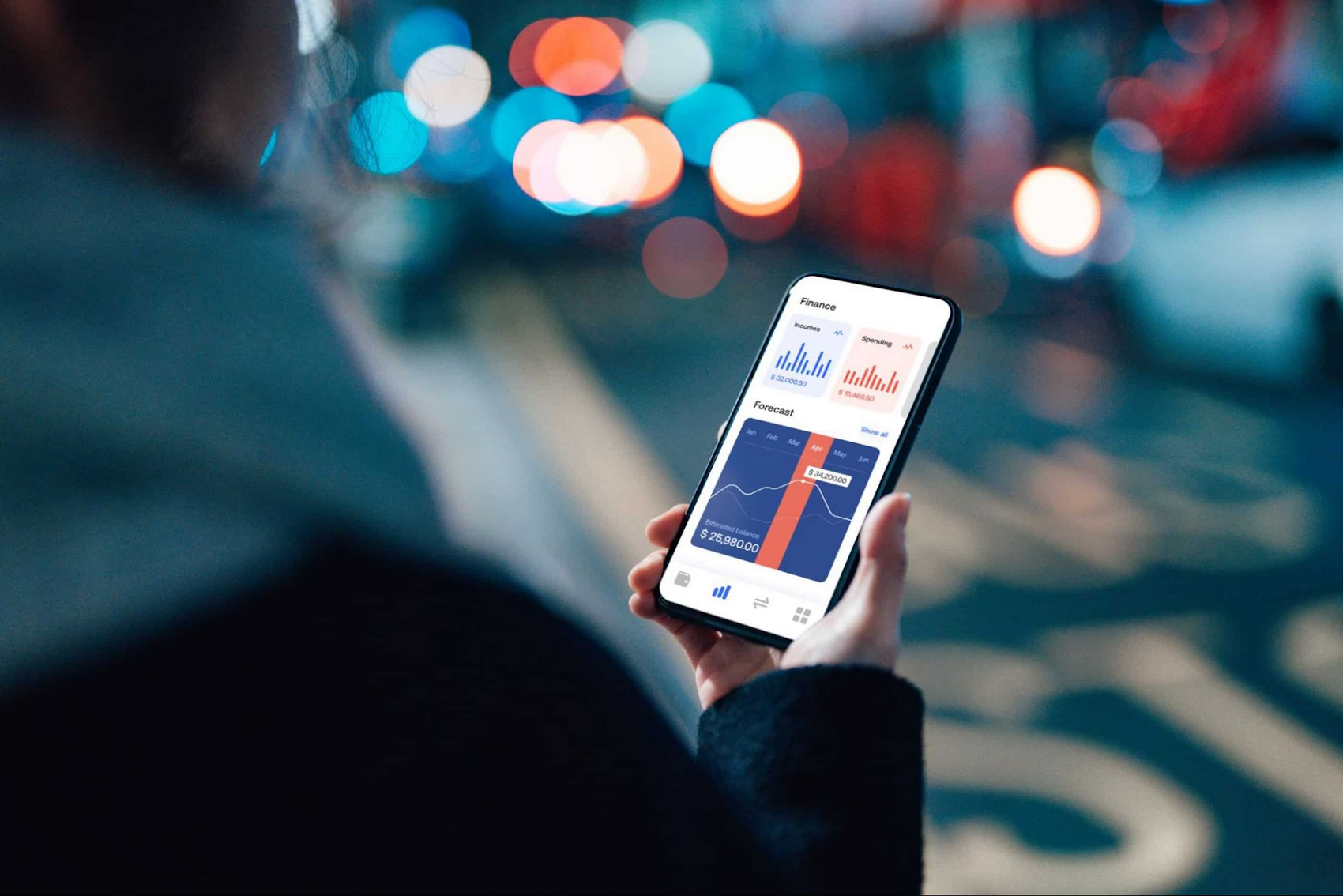How do payments providers keep from getting disrupted? By disrupting themselves first

Yolande Piazza
VP, Financial Services, Google Cloud
How do payments providers stay ahead of disruption? By disrupting themselves first. And how do they do that? On the cloud.
The first time I ever hailed a car with a ridesharing app, I went from point A to point B and never once had to think about whether I had enough cash or what credit card to use. This magical digital black car service removed the friction of a payment step from the journey, and it was fantastic.
A decade ago, if you wanted to pay for something, you needed cash, a credit card, or even a checkbook (remember those?). Checkout could be a cumbersome experience: fumbling for a wallet, searching for the right card, swiping it, and then waiting for the transaction to clear—all steps that stood between you and the door.
Today, we can text, tap, or swipe to pay. Digital payments are stripping away the need to think about the how of a transaction, allowing customers to buy almost instantly without ever reaching for their wallets. After all, it’s been said for years now that people own more phones than they do toothbrushes.
And herein lies the beauty of the payments industry: It’s constantly transforming to give customers what they want, where and when they need it.
Perhaps this is why so many of the fastest-growing innovators of our time are payment providers and commerce platforms. Paypal. Square/Block. Shopify. Affirm. These companies have become leaders by understanding how and where customers really want to pay in their daily lives and delivering technology solutions that make that possible.
By the same token, leading payment providers recognize that continuing to win also means continuing to disrupt, even if they have to disrupt themselves. What works today may fall short tomorrow—and all payment providers must be able to adapt experiences quickly enough to meet changing customer expectations and behaviors. To take just one example, look at the skyrocketing interest in cryptocurrencies and digital assets, and just how quickly tabs began appearing in select payment apps to purchase or transfer these assets.
Clearly, how digital payments companies set up their technology systems now will play a critical role in whether they continue to prosper.
The payments industry faces a perfect storm
The payments sector has been in a nearly constant state of disruption for the last 20 years. In fact, the only certainty at this point is that disruption is constant—and it’s speeding up.
Recent Accenture research found that modernizing payments is a $300 billion opportunity—roughly 2.7 trillion cash transactions are predicted to move to cards and digital payments by 2030.
Digital wallet payments exceeded cash payments for the first time during 2020, according to the FIS 2021 Global Payments Report, and buy-now-pay-later, or BNPL, transaction adoption is expected to double by 2024.
McKinsey reported that real-time payments soared by 41% during 2020 alone and are expected to play an increasingly important role in the global payments ecosystem.
The changes are everywhere. Digital currencies are becoming more reality than dream, real-time payments and new financing solutions are emerging, and more data standard requirements continue to appear. Beyond cloud computing, technologies like 5G, contactless payments such as NFC, and AI and machine learning are maturing fast. (It’s one reason Google Cloud recently established a digital assets team, to help companies tackle another fast-changing area of finance.)
At the same time, consumer demands are accelerating for convenient, flexible, and seamless payment experiences. Customers don’t want to be forced to fit into traditional payment ecosystems anymore. Understanding who they are, where they are in their journey, and being able to provide the services they need at that point will be the key to building payments models that can adapt over time.
Customer obsession is no longer a branding exercise for financial companies. It’s about creating real value that will make people’s lives better.
leading payment providers recognize that continuing to win also means continuing to disrupt, even if they have to disrupt themselves
Any time a customer has to stop to think about a payment or wait to pay is impeding the intent to buy. Think about when you go to the checkout and see a long line of people in front of you. If you’re like me, no matter how much you want to buy something, you might just put down your items and leave. The next challenge will be making payments even more straightforward and seamless.
Taken together, I believe these advancements and factors are bringing the industry towards a tipping point where transactions will be so deeply embedded into experiences and so frictionless that they become effectively invisible. Purchase will no longer interrupt buying, and the complexities of processing a transaction will happen in the background.
With these changes looming large, there is growing pressure in the payments industry to build products faster, modernize and integrate legacy platforms, and extract more value from data to enable better customer experiences. However, all this must be achieved without losing focus on ensuring strong data security, governance, and compliance.
To thrive in the future, payments executives need to build the right underlying technology foundation. What they need starts in the cloud.


Cloud’s solid foundation amid constant disruption
There was a time not so long ago that if you asked a payment provider, or any financial services institution, when they were planning to adopt the cloud, they would have answered in one word: never.
The longstanding perception was that cloud was right for some, but not for financial services. It couldn’t deliver the processing speed or resilience required, nor would it be capable of addressing risk and compliance at the level needed within such a highly-regulated industry.
a tipping point where transactions will be so deeply embedded into experiences and so frictionless that they become effectively invisible
But the cloud of 2022 is not the same cloud from a decade ago. Cloud computing has become the requisite technology foundation across every industry, providing better access to data, dynamic scale, built-in security, and agile capabilities that drive new features and innovations. Traditional solutions simply can’t keep up.
In my experience speaking with Google Cloud’s financial services customers, there are five key ways cloud platforms help companies deliver differentiated payment experiences:
1. Providing resilient, fast infrastructure that can scale at speed. Migrating to the cloud puts flexible, scalable cloud architectures and technologies, such as containers and microservices, within reach, allowing teams to quickly and securely build new applications quickly. Cloud-based architectures and data modernization can save millions of dollars annually that would otherwise be spent on on-premises hardware, software, and licensing costs.
2. Unlocking data to identify new opportunities. Cloud platforms are helping the payments ecosystem centralize and organize their data, facilitating near real-time data consumption to identify monetization opportunities, such as personalized offers or new product development. Transitioning to data cloud platforms can also satisfy critical use cases, such as compliance reporting, intelligent fraud detection, and transaction risk management. Gartner predicts that organizations that promote data sharing will outperform their peers on most business value metrics by 2023.
3. Applying AI and machine learning. Cloud opens the door to advanced analytics and AI that allow payment processors to dive deep into their data and uncover fresh insights. Most cloud providers also enable payments firms to leverage cutting-edge AI models at speed and scale so they can derive insights and make decisions instantaneously on the enormous amounts of transactional data they process.
4. Managing risk and compliance. Providers must strike a balance between faster payment processing and the careful management of data collection, data use, and mitigation of potential fraud or improper disclosure. Data privacy is a service baked into cloud platforms, providing rigorous data policies, rich compliance reporting, and high-performance risk simulation. It also gives payments companies complete control of their data with transparency around where their data is stored and allows them to operate in both localized and distributed ways depending on data sovereignty requirements.
5. Protecting sensitive customer data. Doubts around cloud security are dissipating as trust in service providers very much depends on their ability to deliver the very best security. The cloud offers multi-layered security with identity management, network security, and threat detection and response offerings that rival most in-house solutions. Increasingly, cloud capabilities are also helping to drive even more secure payments features, such as credit card tokenization to protect data during online transactions.
Building the future generation of payments on the cloud
Ultimately, all this boils down to enabling companies to actively drive disruption, not fall victim to it. Cloud systems for payments offer the flexible architecture and technology solutions needed to continuously iterate, improve, and respond to customer needs.
Revolut, a London-based neobank, is a prime example of how payments providers can disrupt things differently, scaling at speed while maintaining stability and security.
Revolut is one of the fastest-growing “money apps'' in the world, gaining 15 million active users and incorporating up to 50 apps on its platform since launching in the UK in 2015. But it became obvious its initial cloud infrastructure would eventually be overwhelmed, underscoring the need to build a new environment that could deliver the scalability, reliability, and security to support its rapid growth.
Revolut’s new core cloud infrastructure, built on Google Cloud, balanced ease of use, automated deployment, and most critically, control over its security, particularly ensuring its multi-terabyte databases remain highly secure. The cloud has been key to enabling Revolut’s success and growth. This allowed Revolut to offer customers more innovative ways to manage their money without having to compromise on security.


These examples also serve as a reminder that it’s not just traditional financial services institutions operating on legacy systems who benefit from embracing new technologies like cloud. Even fintech companies who have grown up in physical data centers or newcomers operating partially in the cloud are at risk of falling behind the pace of the payment journey if they don’t take steps now.
Be the next digital disruptor
The day is coming when waiting in line to pay will become obsolete and payments will be completely seamless. Imagine pulling into a gas station and the transaction for you will be filling up the tank. In this new reality, you’ll be able to go to a store, grab what you want, and walk back out without even carrying your wallet out of the house. Your smart fridge already allows you to reorder groceries or even recognize that you need new milk every five days—and order it for you. And there’s the question of whether you’ll be paying in dollars, Euros, yen, Bitcoin, Ethereum, or some other alternative currency.
Is your business ready?
Payment providers have an opportunity now that didn’t exist in the last decade to predict and anticipate what customers want and simultaneously reinvent themselves. Cloud technology and capabilities will enable the payments industry to make decisions and play an active role in reshaping the future of the payment landscape.



